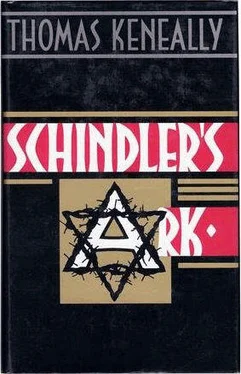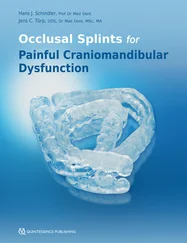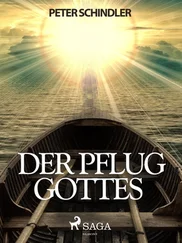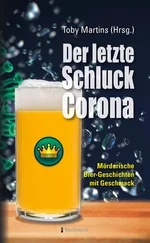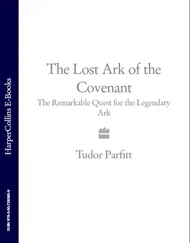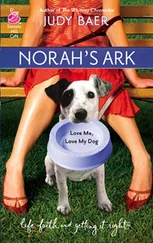Henry Rosner and nine-year-old Olek (apparently no longer considered necessary for the laboratories) were marched away from Auschwitz in a column for thirty miles, and those who fell behind were shot. In Sosnowiec they were packed into freight cars. As a special kindness, an SS guard who was supposed to separate the children let Olek and Henry go into the same car. It was so crowded that everyone had to stand, but as men died of cold and thirst a gentleman whom Henry described as “a smart Jew” would suspend them in their blankets from horse hooks near the roof. In this way there was more floor space for the living. For the sake of the boy’s comfort, Henry got the idea of slinging Olek in his blanket in exactly the same way from the horse hooks. This not only gave the child an easier ride; when the train stopped at stations and sidings, he would call to Germans by the rails to throw snowballs up to the wire gratings. The snow would shatter and spray the interior of the wagon with moisture, and men would struggle for a few ice crystals.
The train took seven days to get to Dachau, and half the population of the Rosners’ car died. When it at last arrived and the door was opened, a dead body fell out, and then Olek, who picked himself up in the snow, broke an icicle off the undercarriage and began to lick it ravenously. Such was travel in Europe in January 1945.
For the Goleszów quarry prisoners it was even worse. The bill of lading for their two freight cars, preserved in the archives of the Yad Vashem, shows that they were traveling without food for more than ten days andwiththe doors frozen shut. R, a boy of sixteen, remembers that they scraped ice off the inside walls to quench their thirst. Even in Birkenau they weren’t unloaded. The killing process was in its last furious days. It had no time for them. They were abandoned on sidings, reattached to locomotives, dragged for 50 miles, uncoupled again. They were shunted to the gates of camps, whose commandants refused them on the clear ground that by now they lacked industrial value, and because in any case facilities—bunks and rations—were everywhere at the limit.
In the small hours of a morning at the end of January, they were uncoupled and abandoned in the rail yards at Zwittau. Oskar says a friend of his telephoned from the depot to report human scratchings and cries from inside the cars. These pleadings were uttered in many tongues, for the trapped men were, according to the manifest, Slovenes, Poles, Czechs, Germans, Frenchmen, Hungarians, Netherlanders, and Serbians. The friend who made the call was very likely Oskar’s brother-in-law. Oskar told him to shunt the two cars up the siding to Brinnlitz.
It was a morning of gruesome cold—minus 30 degrees Celsius (minus 22 degrees Fahrenheit), says Stern. Even the exact Biberstein says that it was at least minus 20 degrees (minus 4 degrees F). Poldek Pfefferberg was summoned from his bunk, fetched his welding gear, and went out to the snowy siding to cut open the doors iced hard as iron. He too heard the unearthly complaints from within.
It is hard to describe what they saw when the doors were at last opened. In each car, a pyramid of frozen corpses, their limbs madly contorted, occupied the center. The hundred or more still living stank awesomely, were seared black by the cold, were skeletal. Not one of them would be found to weigh more than 75 pounds.
Oskar was not at the siding. He was inside the factory, where a warm corner of the workshop floor was being made ready for the shipment from Goleszów. Prisoners dismantled the last of Hoffman’s dumped machinery and carried it to the garages. Straw was brought in and the floor strewn with it.
Already Schindler had been out to the Commandant’s office to speak to Liepold. The Untersturmführer didn’t want to take the Goleszów men; in that, he resembled all the other commandants they had met in the past few weeks. Liepold remarked pointedly that no one could pretend that these people were munitions workers. Oskar admitted that, but guaranteed to put them on the books, and so to pay 6 RM. a day for each of them. “I can use them after their recuperation,” said Oskar. Liepold recognized two aspects of the case. First, that Oskar was unstoppable. Second, that an increase in the size of Brinnlitz and the labor fees paid might well please Hassebroeck. Liepold would have them quickly enrolled on the books and the entries back-dated, so that even as the Goleszów men were carried in through the factory gate, Oskar was paying for them.
Inside the workshop, they were wrapped in blankets and laid down on the straw. Emilie came from her apartment, followed by two prisoners toting an enormous bucket of porridge. The doctors noted the frostbite and the need for frost ointments. Dr. Biberstein mentioned to Oskar that the Goleszów people would need vitamins, though he was sure there were none to be had in Moravia. In the meantime the 16 frozen corpses were placed in a shed. Rabbi Levartov, looking at them, knew that with their limbs twisted by the cold they would be hard to bury in the Orthodox manner, which permitted no breaking of bones. The matter, Levartov knew, would, however, have to be argued with the Commandant. Liepold had on file from Section D a number of directives urging SS personnel to dispose of the dead by burning. In the boiler rooms were perfect facilities, industrial furnaces capable almost of vaporizing a body. Yet Schindler had so far twice refused to permit the burning of the dead.
The first time was when Janka Feigenbaum died in the Brinnlitz clinic. Liepold had at once ordered her body incinerated. Oskar heard through Stern that this was abhorrent to the Feigenbaums and to Levartov, and his resistance to the idea may have been fueled also by the Catholic residue in his own soul. In those years the Catholic Church was firmly opposed to cremation. As well as refusing Liepold the use of the furnace, Oskar also ordered the carpenters to prepare a coffin, and himself supplied a horse and wagon, allowing Levartov and the family to ride out under guard to bury the girl in the woods.
Feigenbaum father and son had walked behind the wagon, counting the steps from the gate so that when the war ended they could reclaim Janka’s body. Witnesses say that Liepold was furious at this sort of pandering to the prisoners. Some Brinnlitz people even comment that Oskar could show toward Levartov and the Feigenbaums a more exacting delicacy and courtesy than he usually managed with Emilie.
The second time Liepold wanted the furnaces used was when old Mrs. Hofstatter died. Oskar, at Stern’s request, had another coffin prepared, allowing a metal plaque on which Mrs. Hofstatter’s vital statistics were marked to be included in the coffin. Levartov and a minyan, the quorum of ten males who recite Kaddish over the dead, were permitted to leave camp and attend the funeral.
Stern says that it was for Mrs. Hofstatter’s sake that Oskar established a Jewish cemetery in the Catholic parish of Deutsch-Bielau, a nearby village. According to him, Oskar went to the parish church on the Sunday Mrs. Hofstatter died and made the priest a proposition. A quickly convened parish council agreed to sell him a small parcel of land just beyond the Catholic cemetery. There is nothing surer than that some of the council resisted, for it was an era when Canon Law was interpreted narrowly in its provisions as to who could and who could not be buried in consecrated ground.
Other prisoners of some authority say, however, that the Jewish cemetery plot was bought by Oskar at the time of the arrival of the Goleszów cars with their tithe of twisted dead. In a later report, Oskar himself implies that it was the Goleszów dead who caused him to buy the land. By one account, when the parish priest pointed out the area beyond the church wall reserved for the burial of suicides and suggested that the Goleszów people be buried there, Oskar answered that these weren’t suicides. These were victims of a great murder. The Goleszów deaths and the death of Mrs. Hofstatter must have come close together in any case, and were both marked with full ritual in the unique Jewish cemetery of Deutsch-Bielau.
Читать дальше
